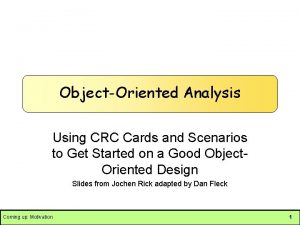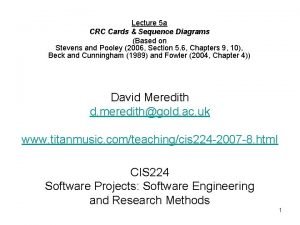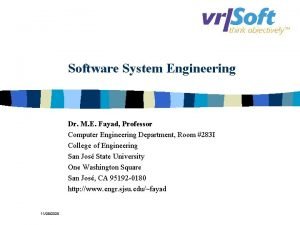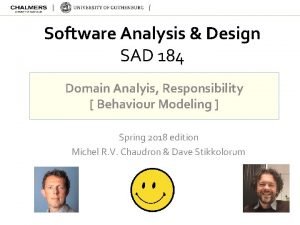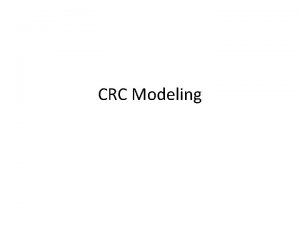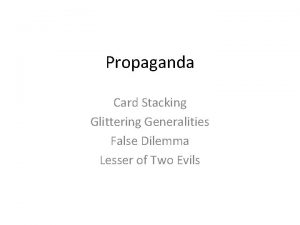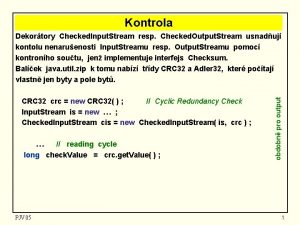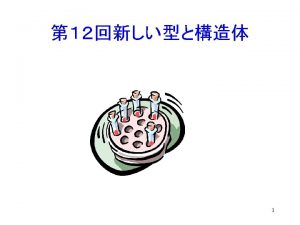CRC Card Design A CRC Model is a








- Slides: 8

CRC Card Design A CRC Model is a collection of cards (usually standard index cards or larger) that are divided into three sections. 1. Class 2. Responsibility 3. Collaborator

Sample CRC Card • This is a sample CRC Card

Class • A Class represents a collection of similar objects. Objects are things of interest in the system being modeled. They can be a person, place, thing, or any other concept important to the system at hand. The Class name appears across the top of the CRC card.

Responsibility • A Responsibility is anything that the class knows or does. These responsibilities are things that the class has knowledge about itself, or things the class can do with the knowledge it has. • For example, a person class might have knowledge (and responsibility) for its name, address, and phone number. In another example an automobile class might have knowledge of its size, its number of doors, or it might be able to do things like stop and go. The Responsibilities of a class appear along the left side of the CRC card.

Collaborator • A Collaborator is another class that is used to get information for, or perform actions for the class at hand. It often works with a particular class to complete a step (or steps) in a scenario. The Collaborators of a class appear along the right side of the CRC card.

Finding Classes • A Class represents a collection of similar objects. Objects are things of interest in the system being modeled. They can be a person, place, thing, or any other concept important to the system at hand. • There are many ways to identify classes. One of the easiest to start with is noun extraction. Noun extraction identifies all of the Nouns in a problem statement and/or use-case scenario. The nouns extracted make excellent candidate classes. • Other ways to identify classes are to look for items that interact with the system, or things that are part of the system. Ask if there is a customer of the system, and identify what the customer interacts with. Screens and reports represent interface classes, but for the sake of a CRC session, a single GUI class can represent these. • If a class can’t be named with less than three words, then it’s probably not a class but a responsibility of another class.

Finding Responsibilities • A Responsibility is anything that the class knows or does. These responsibilities are things that the class has knowledge about itself, or things the class can do with the knowledge it has. • To compliment the 'Noun Extraction' technique above is verb extraction. Verb extraction identifies all of the verbs in a problem statement and/or use-case scenario. These are usually good indicators of actions that must be performed by the classes of the system. • Other techniques included asking what the class knows, and what information must be stored about the class to make it unique. Ask what the class does, and then flesh out how the class might do it.

Finding Collaborators • • Collaboration occurs when a class needs information that it doesn’t have. Classes know specific things about themselves. Very often to perform a task a class needs information that it doesn't have. Often it's necessary to get this information from another class, in the form of collaboration. Collaboration can also occur if a class needs to modify information that it doesn’t have. One property of information that a class knows about itself is the ability to update the information. Often a class will want to update information that it doesn't have. When this happens, the class will often ask another class, in the form of a collaboration, to update the information for it. Generally for a collaboration to occur, one class is the initiator. In other words, there has to be a starting point for collaboration. Often times the initiating class is doing very little work beyond initialing the collaboration itself. However, be careful that a class doesn't just 'pass the buck', just to have it passed again. For example, if class A collaborates with class B, just to have class B pass the work to class C, consider eliminating the collaboration with class B.
